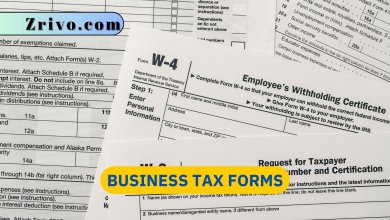Payroll Taxes in 2023 - 2024

Contents
There are several taxes you pay as an employee before you get your income in hand. There are multiple payroll taxes. You will pay at least three different taxes when your employer processes payroll and depending on where you live/work, you might pay two additional taxes. In this article, we will go over the taxes deducted from your income when processing payroll.
Federal income taxes
The Internal Revenue Service wants taxpayers to pay off their federal income tax bill gradually during the tax year rather than making one payment when you file your return. Every time you receive a paycheck from your employer, the federal income taxes are withheld proportional to the check amount. For example, you normally earn $800 weekly with $90 of it going towards federal income taxes, but this week you earned $1,200. Your employer won’t withhold $90 from the $1,200 earned. Instead, your employer will withhold a higher amount of federal income taxes as you’ve earned more.
Rather than thinking about the federal income taxes as a fixed amount you pay every paycheck, think of it as something you pay a portion of your income. This makes it a lot easier to understand how the federal income tax withholdings work. For the most accurate rate of federal income taxes withheld, fill out Form W-4 correctly.
Social Security taxes
Social Security tax is another mandatory payroll tax that every employee pays regardless of their income. This payroll tax has a flat rate of 6.2 percent for every employee. Employers then match the amount the employee needs to pay – totaling the rate at 12.4 percent.
Medicare taxes
Like the Social Security taxes, Medicare tax is a mandatory tax with a flat rate. Employees pay 1.45 percent of their income in Medicare taxes. However, if the employee makes over $200,000 ($250,000 for married couples), there is an additional Medicare withholding for the income that exceeds the threshold. The additional Medicare withholding is 0.9, increasing the total rate to 2.35 percent.
Frequently asked questions about payroll taxes
Who pays payroll tax?
Every employee working in the United States, with the exception of nonresident aliens that are permitted to work pays payroll taxes. The payroll tax includes FICA taxes (Social Security and Medicare) and income taxes at the federal, state, and local levels.
How does payroll tax work?
As an employee, you don’t need to worry about the technical side of payroll taxes. They are withheld from your income by your employer and you get your paycheck in net amount, not gross. So, you don’t need to mind the payroll taxes coming out of your income. Employers are responsible for adequately paying and forwarding the taxes that need to be paid by employees.
What is the percentage of payroll tax?
The percentage of the payroll tax is 7.65 percent for both Social Security and Medicare and the income taxes. The total percentage is about 20 percent for most employees, but the more the employee earns the higher the payroll tax rate.
Is there a payroll tax cut?
The payroll tax deferral was introduced during the Trump administration due to COVID-19. Employees didn’t pay Social Security taxes for the last quarter of 2023 and paid the deferred taxes in the first five months of 2024. Although it was at a reduced rate, the three months worth of payroll taxes (only Social Security) was spread out over a five month period.





